Reticent Cups
This is the exhibit intro; jump to the cup exhibit
Cups with their few appendages have not been prone to over-elaboration. Cups are generally overlooked; less often submitted to juried shows and infrequently chosen with curatorial insight. (One exception is Galerie Besson's London exhibit, Millenium Mugs.) Perhaps this is good. Teapots, for instance have become an artform unto themselves. Spouts and lids are artfully concealed in trompe l'oeil frolics. Embellished and enhanced, physical interaction becomes superfluous. But the focus here, as always, is a tensioned coexistence among feeling, form, and interaction.
Cups need not be simple. There are historical precedents for some unusual resolutions, such as this Korean horn-shaped cup on a wheeled pedestal (Kaya Kingdom, 5th century AD).
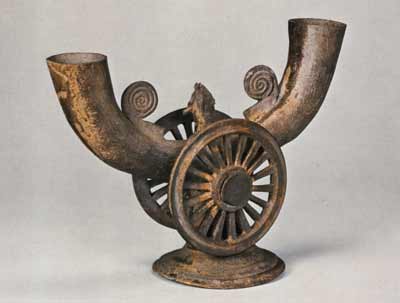
Korea; Kyeongsand-do Province; Ogura Collection
Ceramic Art of the World, Volume 17; Korean Prehistoric; Shogakukan 1979; plate 53
But taken as an intriguing aesthetic quandary--how to dovetail expression and function--forestalls a too lavish base or saucer that dissipates our awareness of the cup itself.
Catherine White's cup boxes are meant to pivot our attention to this overlooked form without festooning the form itself. The unfolding of the box is consummated by drinking. This inherent potential is diminished should display overwhelm physical use.
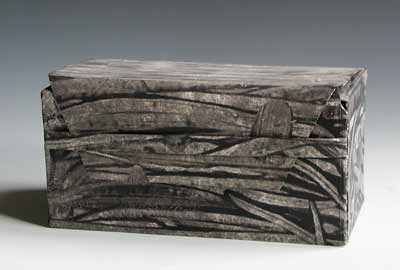
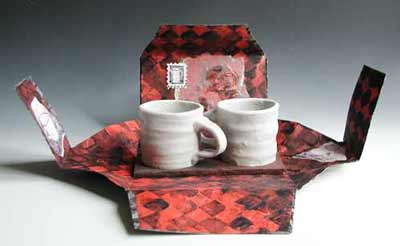
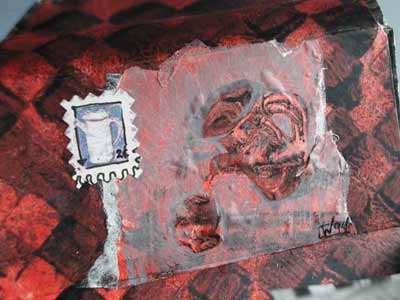
White Faceted Cup Box - Closed, Open, Detail
Catherine White
Changing how we hold a cup, changes our perception of the cup. It grabs our attention; it's harder to overlook or ignore. But at the same time there is great value in a reticent cup for it demands use.
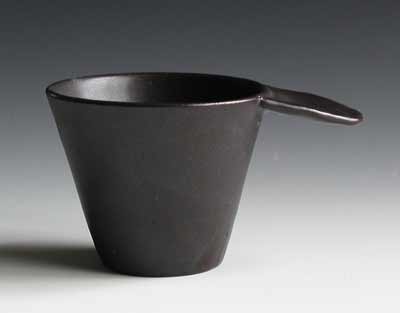
Black Ladle Cup
Warren Frederick
As a maker, one of my guiding principals is to return to original sources--not someone else's interpretation. Isamu Noguchi, for instance, owned this 3rd-5th century Japanese earthenware teacup.

Teacup collected by Isamu Noguchi
Japanese Hajiki (earthenware), Tumulus period, 3rd-5th century
Isamu Noguchi and Rosanjin Kitaoji; Exhibition Catalog, Sezon Museum of Art et al, 1996, fig. 47
Inspired, Noguchi made this earthenware sketch along with a plaster mockup of a potential base. His final porcelain design though quite intriguing was never manufactured.

Noguchi's Earthenware Prototype, 1950-1960
Isamu Noguchi and Rosanjin Kitaoji; Exhibition Catalog, Sezon Museum of Art et al, 1996, M-01

Noguchi's Study for a Saucer, 1955-1965, Plaster
Isamu Noguchi and Rosanjin Kitaoji; Exhibition Catalog, Sezon Museum of Art et al, 1996, M-08

Porcelain Teacup with Saucer, H 7 cm W 10.2 cm
Isamu Noguchi and Rosanjin Kitaoji; Exhibition Catalog, Sezon Museum of Art et al, 1996, C-35
As a point of artistic departure, however, I would also work from this 6th century Korean Silla dynasty source:
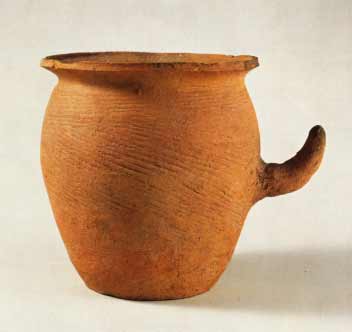
Jar with Horn-Like Handle, H 14.2 cm
Ceramic Art of the World, Volume 17; Korean Prehistoric; Shogakukan 1979; plate 21
Soft red pottery; Silla era (5th - 6th century AD), from Kyongju; National Museum of Korea, Kyongju
Cups that transcend mere reassurance twist assumptions and rejuvenate numbed sight. Yet the target is ever moving. Human senses do become desensitized, inured to repetition. That novel, faceted beaker can become invisible after habitual use. Yet we can become equally jaded by endless intricate novelty--individual displays of over-the-top personality.
One valid solution is an allegiance to nuanced, expressive forms that are amenable to varied use. Beyond the initial intrigue provided by the artist potter, creativity and change in using pottery is as important for maintaining a fresh and novel awareness.
So imagine using the cups in this exhibit. Intuit other unseen variations of intertwined form, process, and substance that can refresh your perception of the cup.
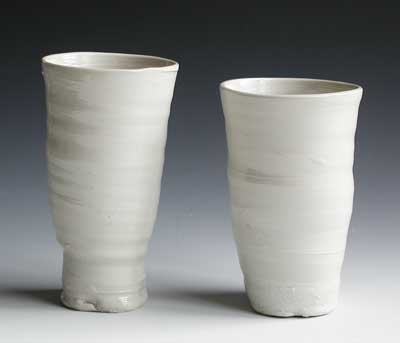
Porcelain Beakers
Jun Kaneko- H 5" x W 2.5"